Natural Dye For Easter Eggs
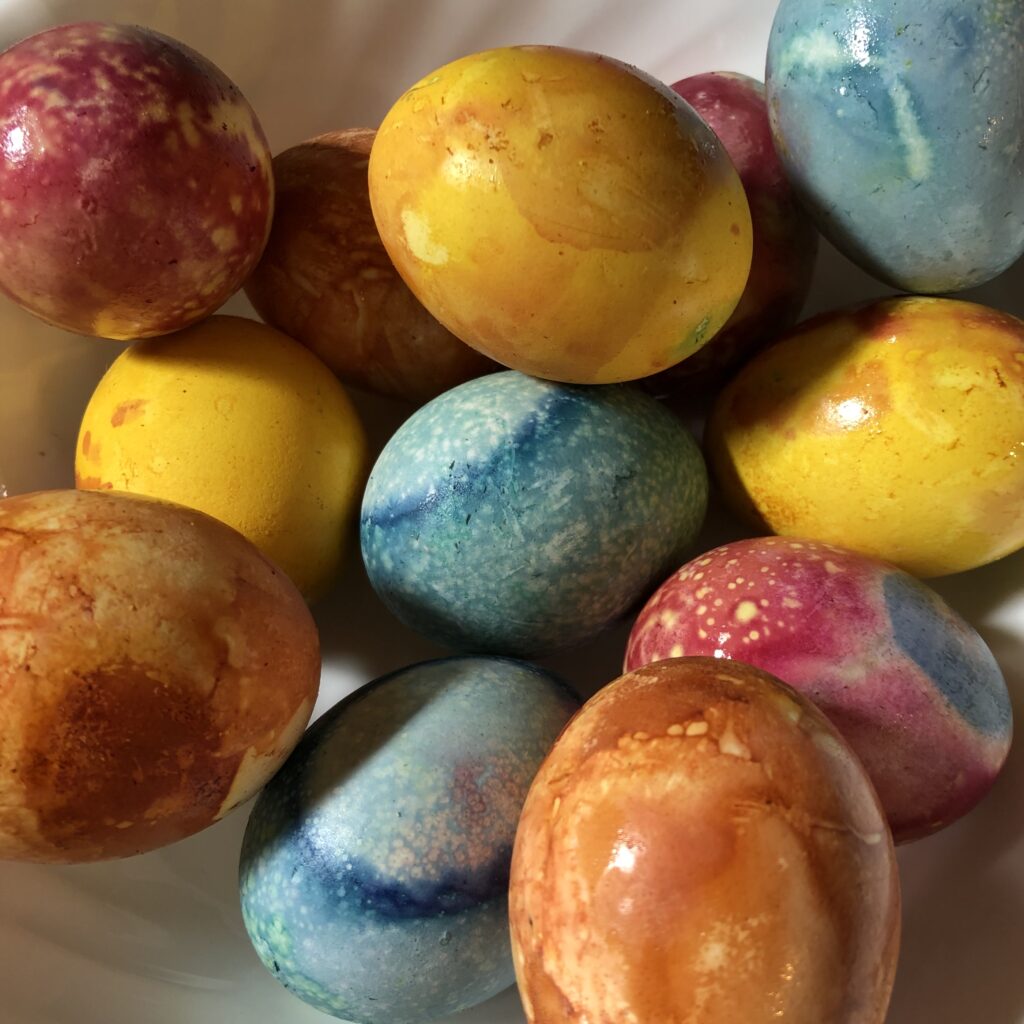
I’ve always been a fan of natural dyes. The colors make me feel like I’m coming home to a flower garden. Some of the prettiest colors come from foods in the kitchen. Who hasn’t wanted to capture the brilliant magenta of beetroots forever?
The problem is, most of the lovely kitchen colors are fugitive dyes, fading over time. No matter what tricks we try, beet juice fades to gray on fabric and leaves us disappointed. Here is a chance to use those fugitive dyes with brilliant success!
Dye your hardboiled eggs with beets, turmeric, purple cabbage, and onion skins for beautiful shells with no scary toxic-looking commercial dyes!
Yellow Onion Skins to Dye Eggs
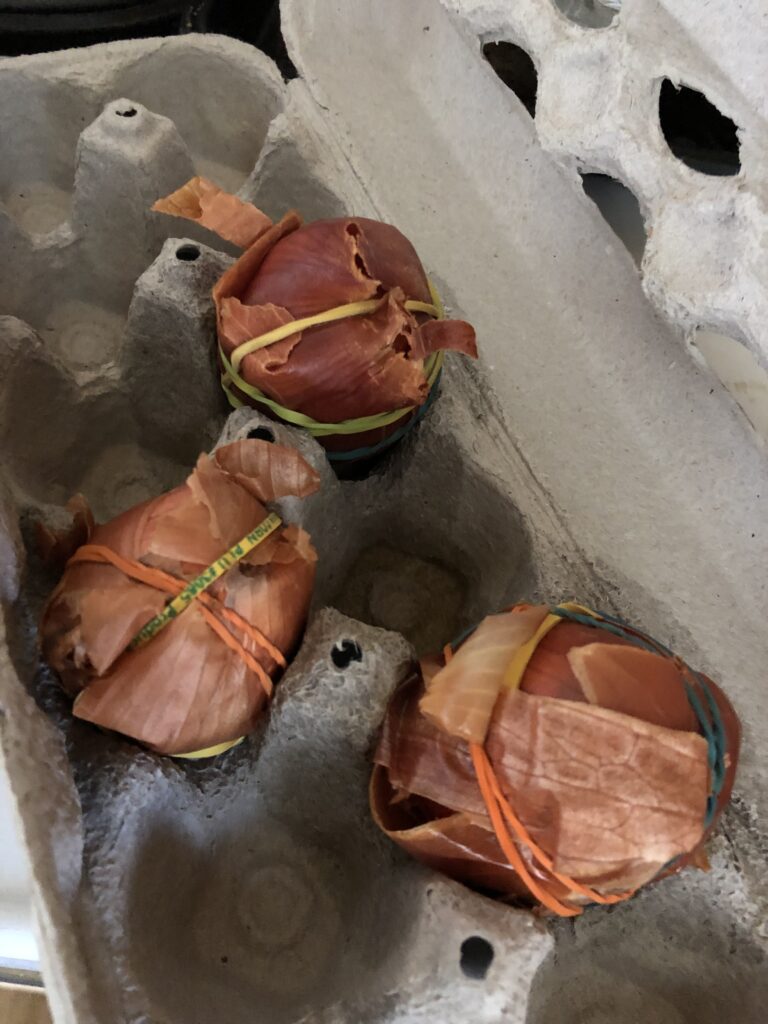
Wrapped gently in discarded yellow onion skins and held securely with rubber bands, these eggs are ready for water and a splash of vinegar and salt.
Boil the eggs in their “wrappers” for about 10 minutes, just like any hard boiled egg.
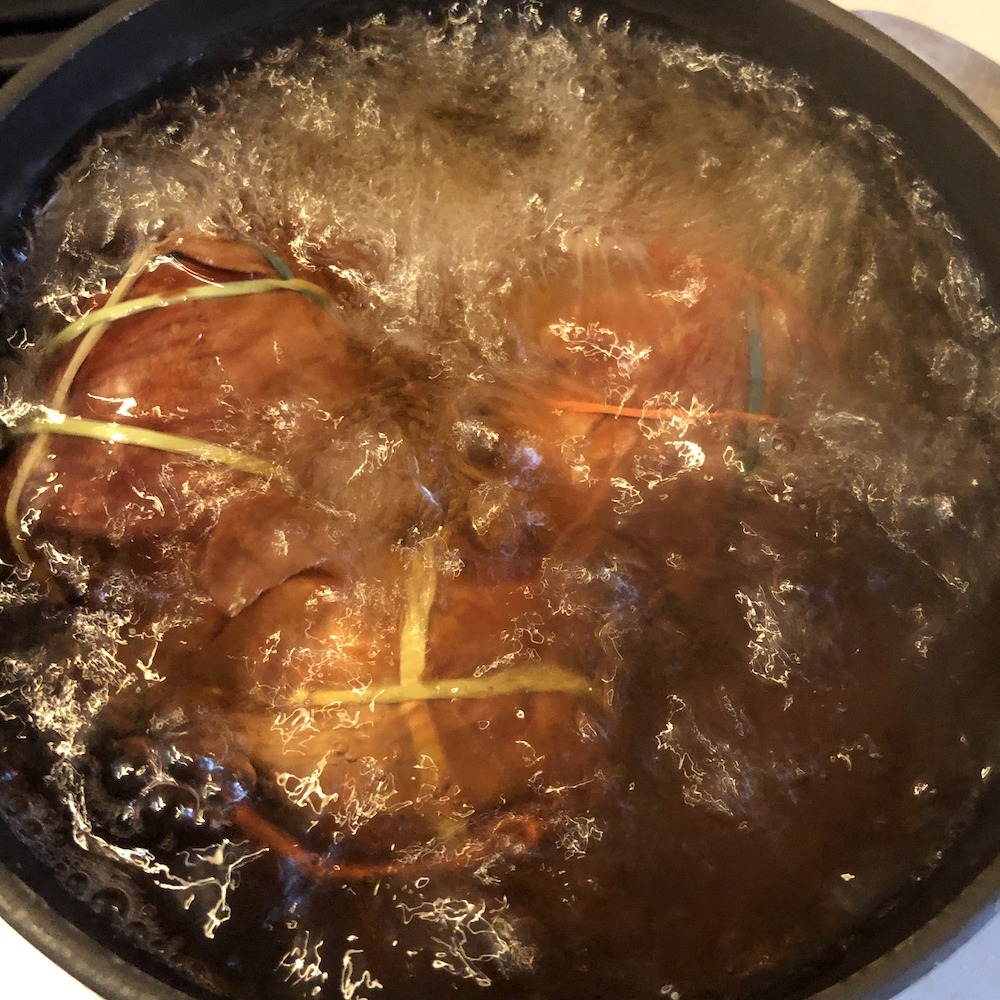

Drain the eggs and refrigerate them overnight with their wrappers still intact.
In the morning, you can remove the onion skins, revealing the beautiful marbled golden brown eggs underneath.

Your eggs can be kept in the refrigerator like any hard-boiled egg. Use for decorating, hiding, or cooking as you like! There will be a faint taste of onion, vinegar, and salt in the egg, so they are best used in savory salads or deviled.
Onion skins are one kitchen dye that is not fugitive, and can be used with mordants on cloth or paper to create lovely yellows, golds, oranges, and browns. The produce people at your local grocery store are usually happy to part with the skins, as they discard them anyway.
Beet Root Dye For Eggs
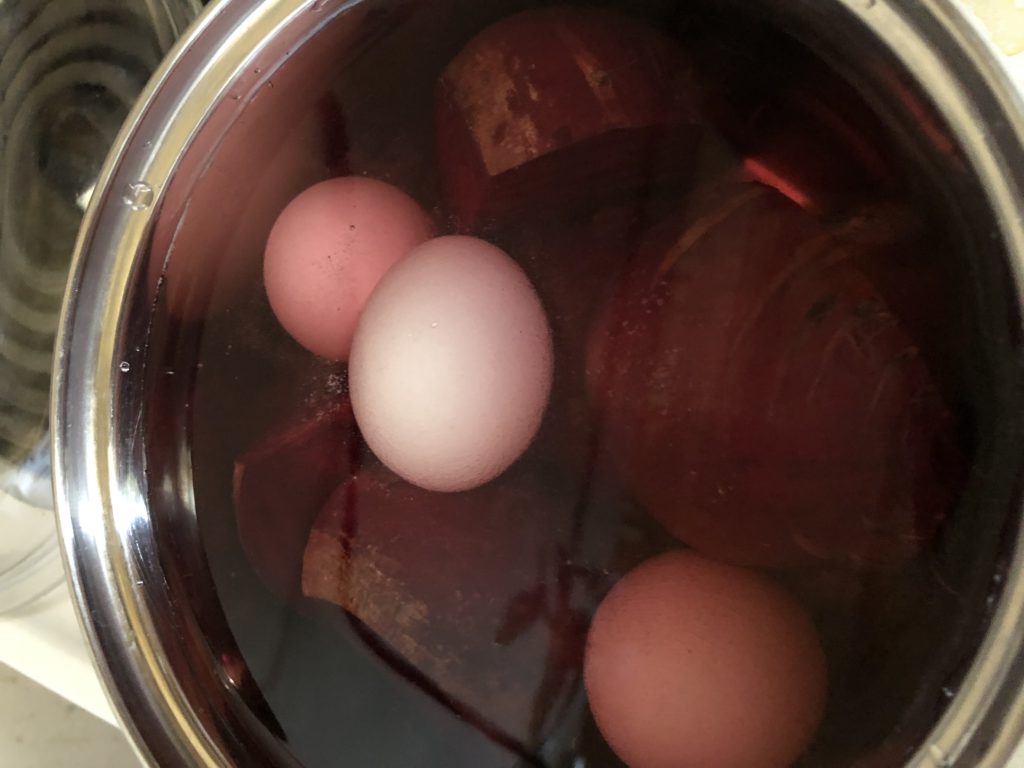
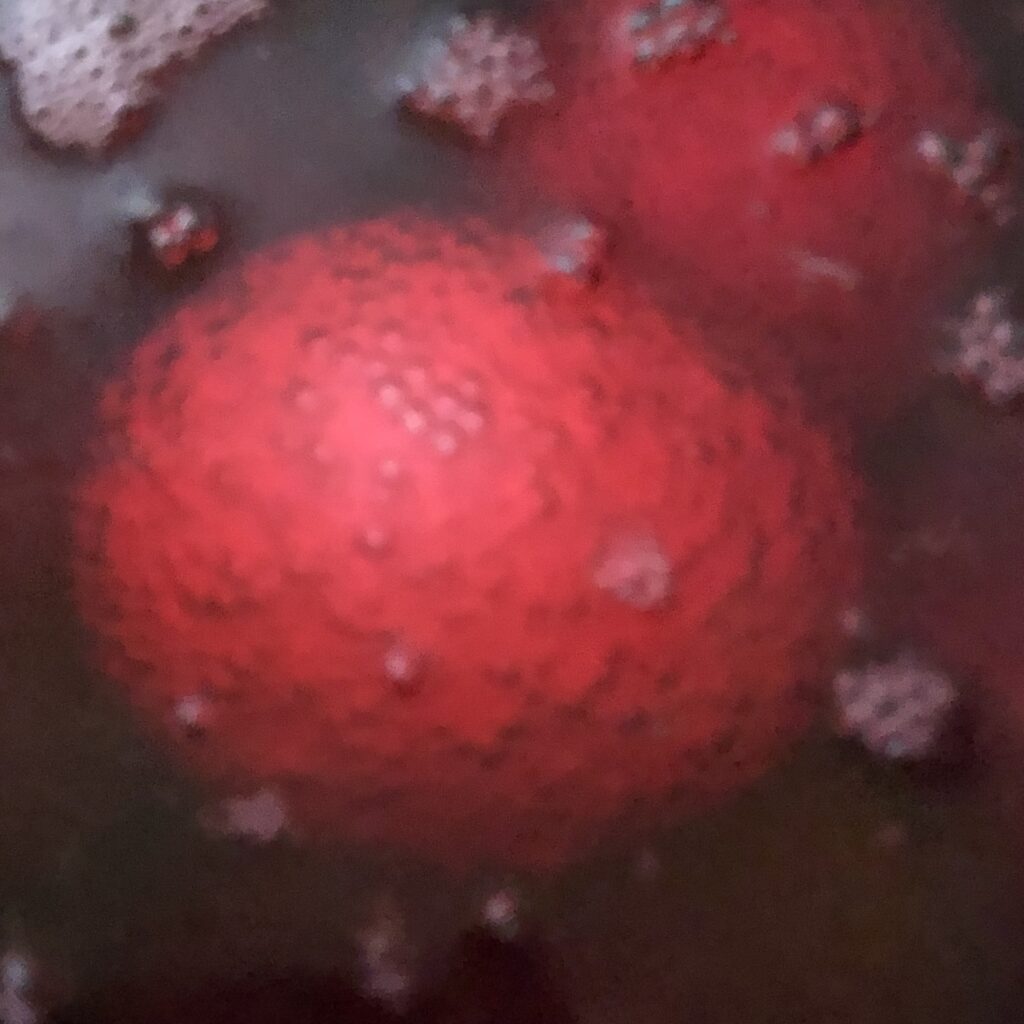
You’ll add a splash of white vinegar and about half a teaspoon of salt to the cooking water to help the dye penetrate the egg shell. This also adds a pleasant flavor to the cooked beets. As long as you wash both your eggs and your beet roots, they can be cooked together. The beets usually take longer than the 10 minutes a hard-boiled egg requires, so pull the eggs after 10 minutes and let the beets continue to cook until tender.
Save the pretty water, though, for repeated dips to increase the color saturation on your eggs!
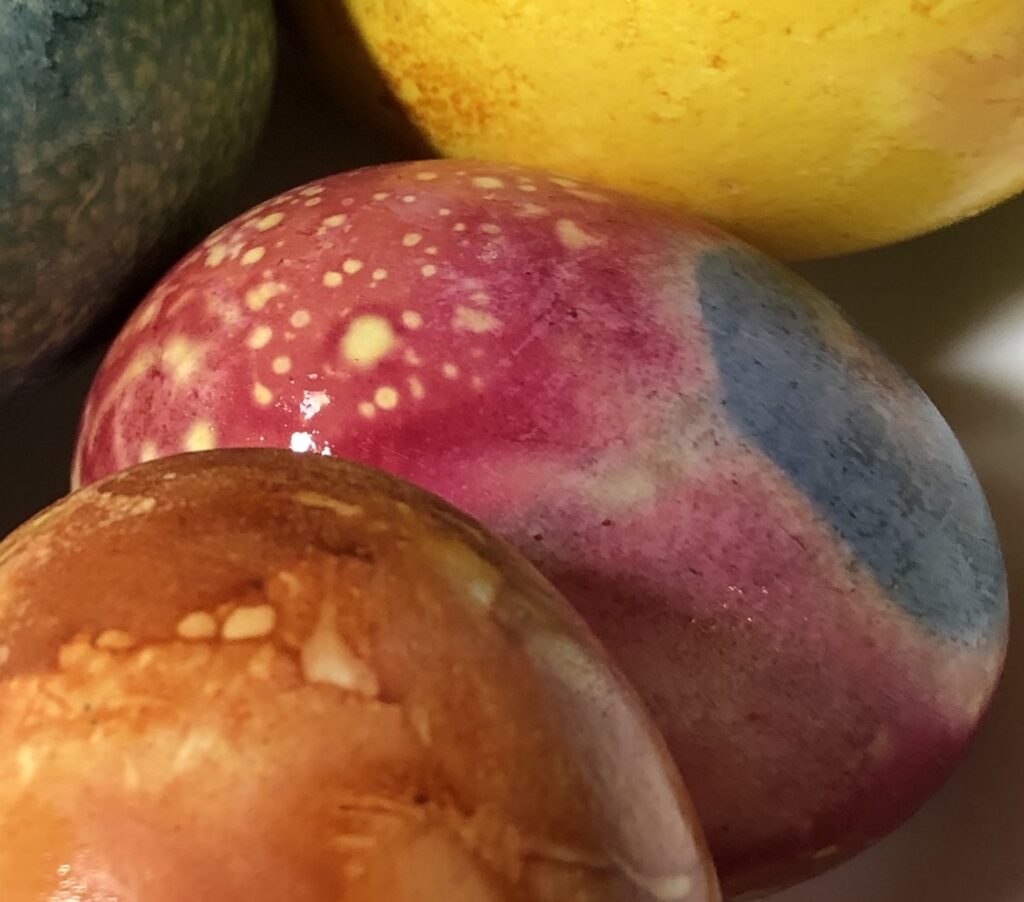
Turmeric Dyed Eggs
For a brilliant yellow color on your eggs, nothing beats turmeric powder — except the fresh root which is only occasionally available in my local produce markets.
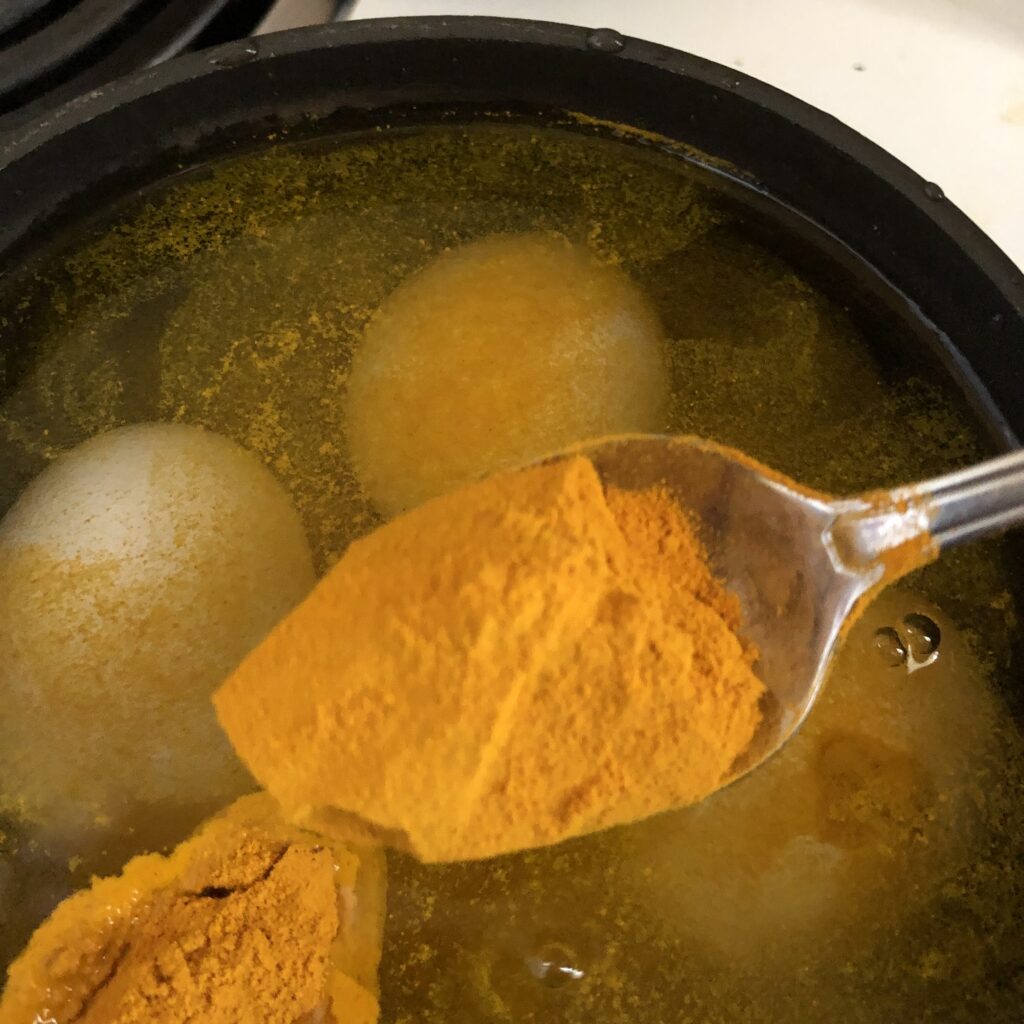
I buy turmeric in bulk packages from the health food store. It’s all the rage right now as an anti-inflammatory ingredient in smoothies, so it’s not expensive. If you’ve ever tried processing the fresh roots yourself, it’s… well… a very colorful job. When your fingernails are brilliant yellow the dye is not really fugitive fast enough. Luckily, I discovered this on a day when I did not have to go to work.
Just as with the other dyes, add a splash of white vinegar and a dash of salt to your water along with the turmeric powder. It will float on top at first, but it sinks in and colors the water as it gets hot on your stovetop.
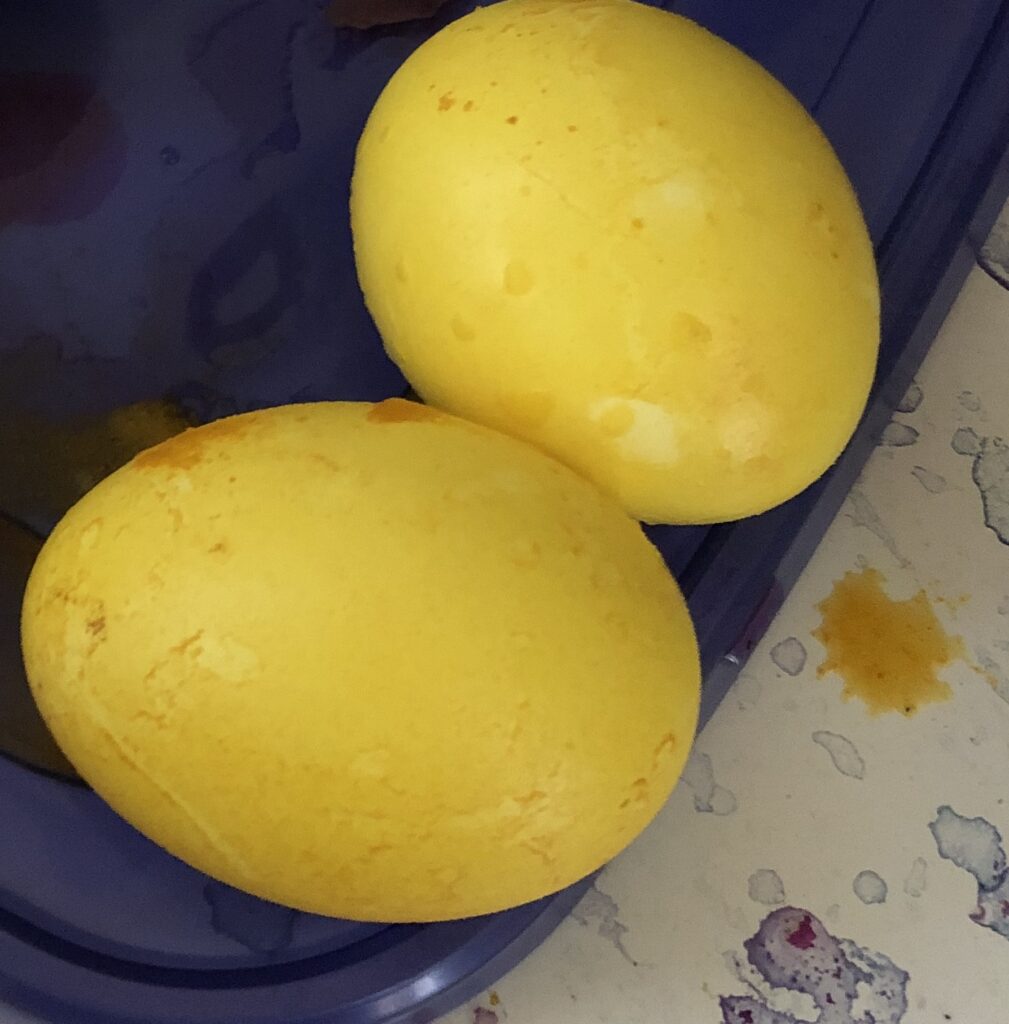
Boil the eggs for 10 minutes or so– whatever is the right amount of time for your elevation. If they are not bright enough, you can dip-and-dry them over and over, getting more intense color each time.
Red Cabbage Dyed Eggs
Red (or Purple) Cabbage turns your eggs a lovely blue color. The more vinegar you add to the cooking water, the more purple the dye becomes, but as it dries, the egg shell reacts with the color turning it blue again. (For a fun experiment, check out Steve Spangler’s page: Red Cabbage Chemistry.
Wash your eggs first, and you can cook them right along with the cabbage. I love cooked cabbage, and the vinegar and salt I add for the dye just makes it more flavorful. Like the other dyes, add about 1/2 teaspoon of salt and a generous splash of vinegar.
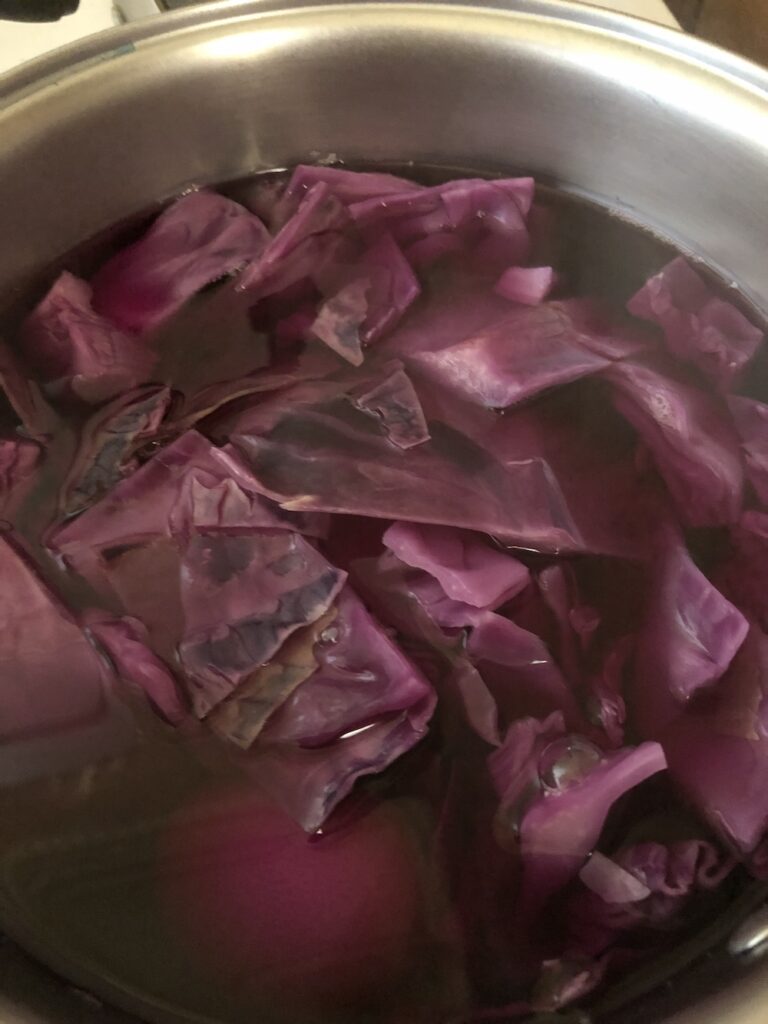
After your cabbage is cooked, save the water for more dips. Try adding lots more vinegar, and then only dip half your egg in the more acidic water. See what happens!
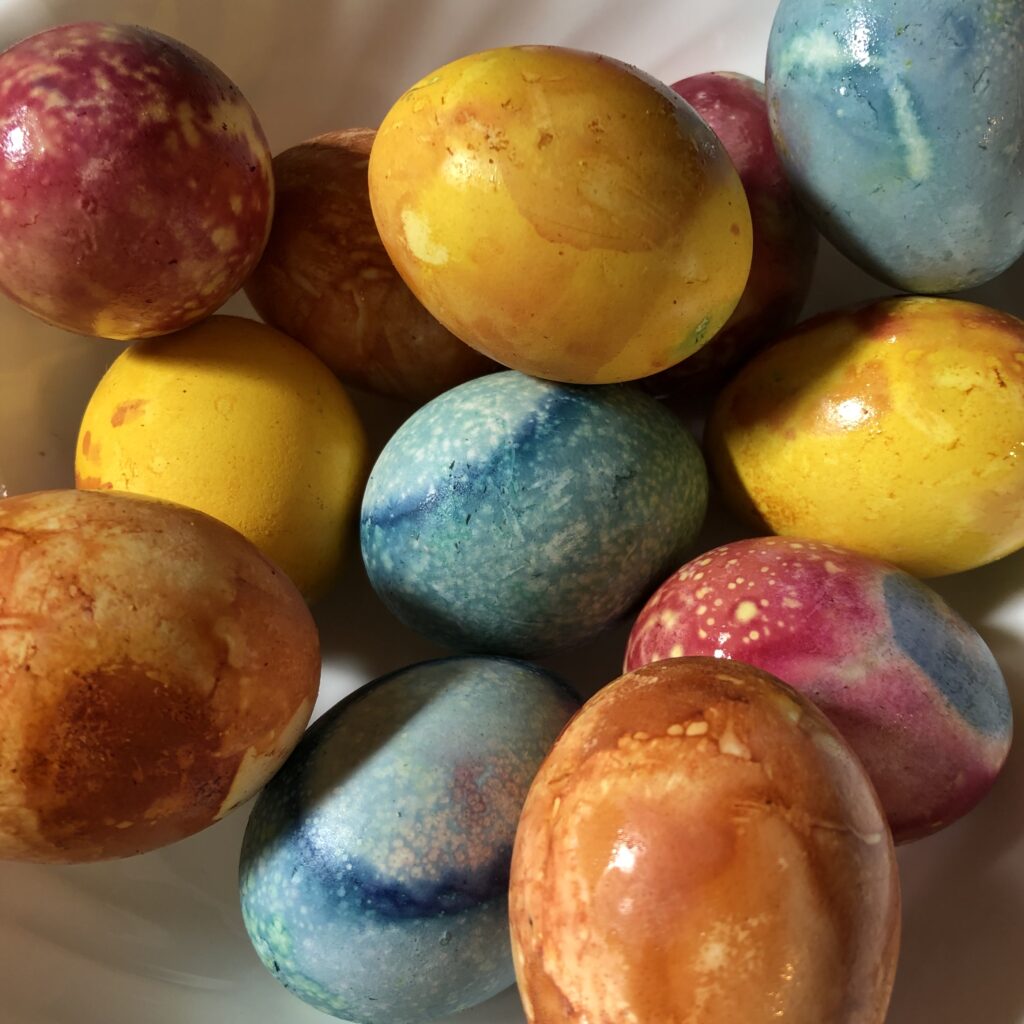
If you try these, send me pictures at kelley@slowyarn.com, and I’ll post them. I’d love to see other experiments, too! (I want to give artichokes a try with this method, too. When I’ve been lazy about doing dishes in the past, I’ve noticed that the artichoke cooking water turns a really pretty turquoise color!)
I hope everyone has fun experimenting with these natural dyes. It’s not every day you get to play with the lovely colors of the fugitive kitchen dyes and still feel happy with your results.
Comments are always welcome at SlowYarn.com! Let us know if you’ve tried this and what you think!
Copyright © 2019-2023 Kelley Adams. All rights reserved.
All text, photos, and graphics are the property of Kelley Adams.

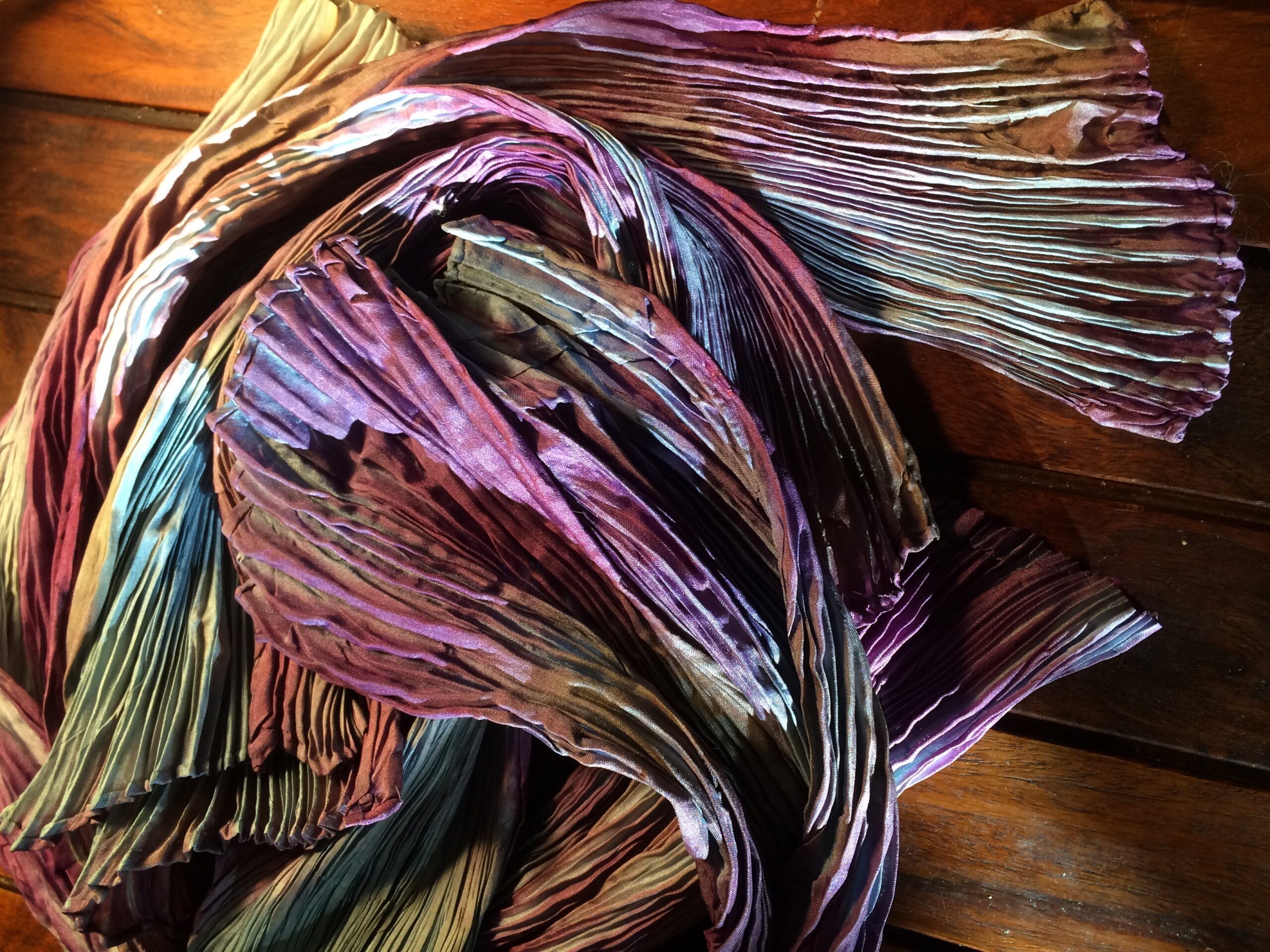
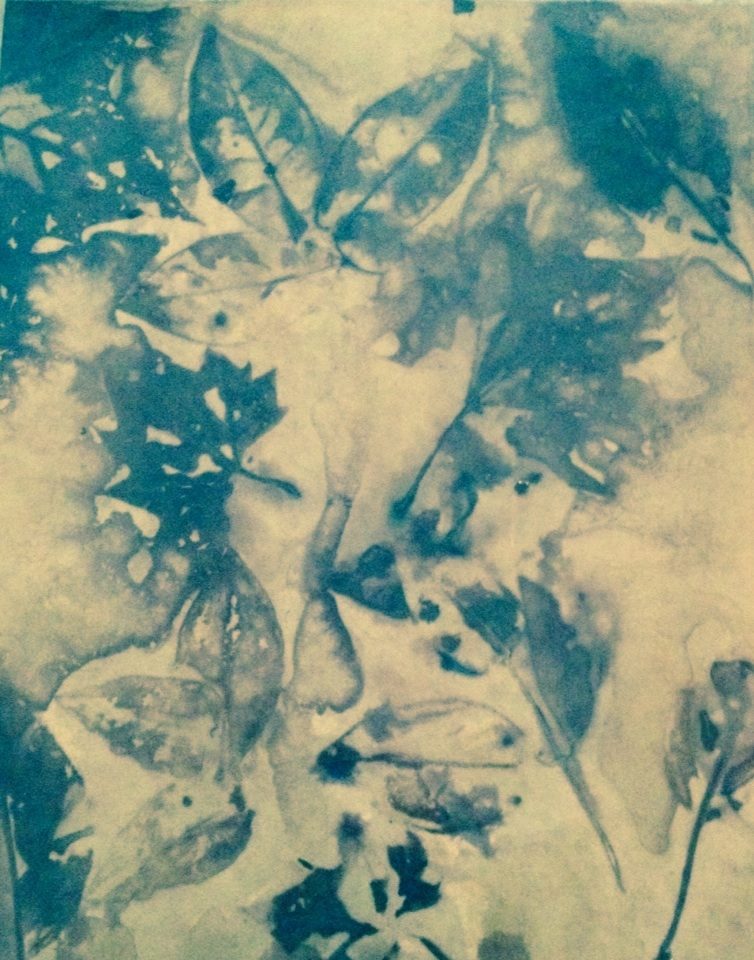
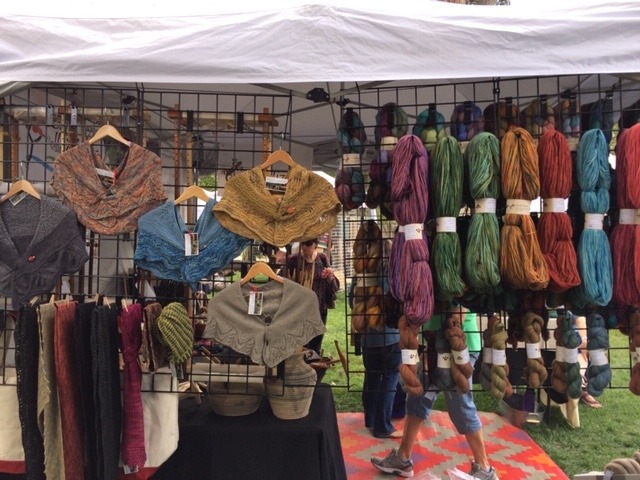









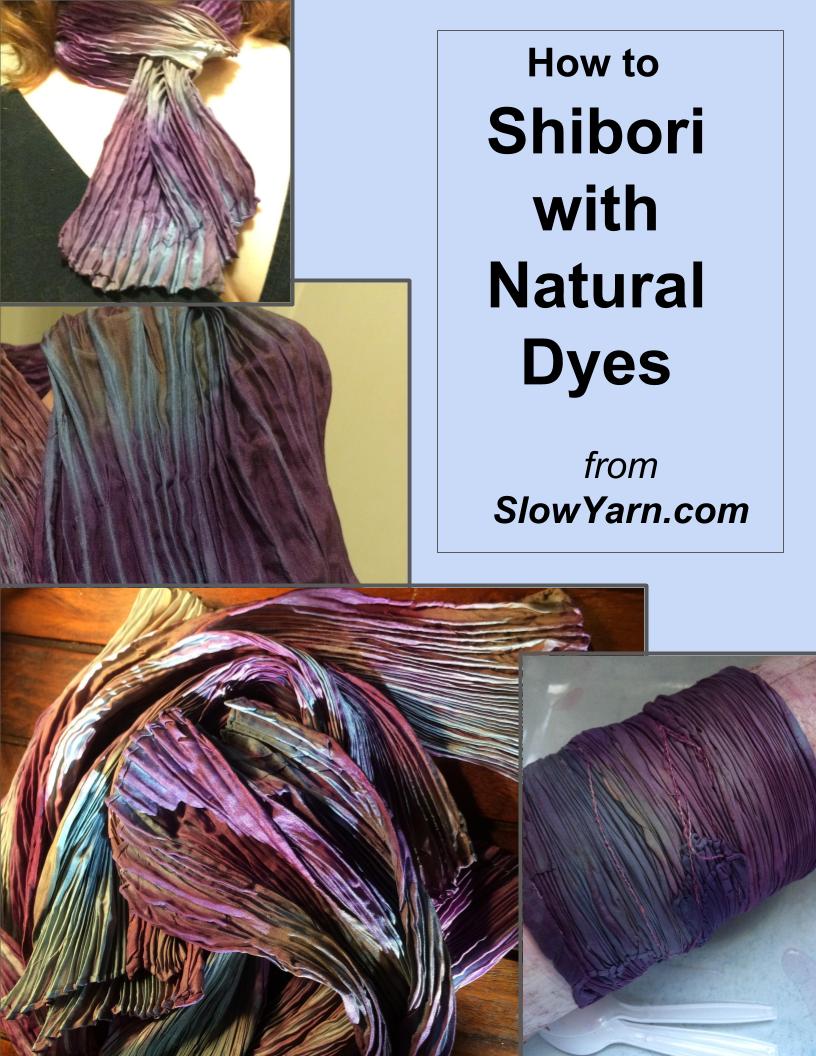
My Grandma did Easter eggs the way. I loved seeing the tie dye effect. You brought back a memory so dear to my heart. Thank you for this.
What a wonderful comment this is! I’m very happy to have brought back happy memories for you. Thank you for letting me know. ~~Kelley